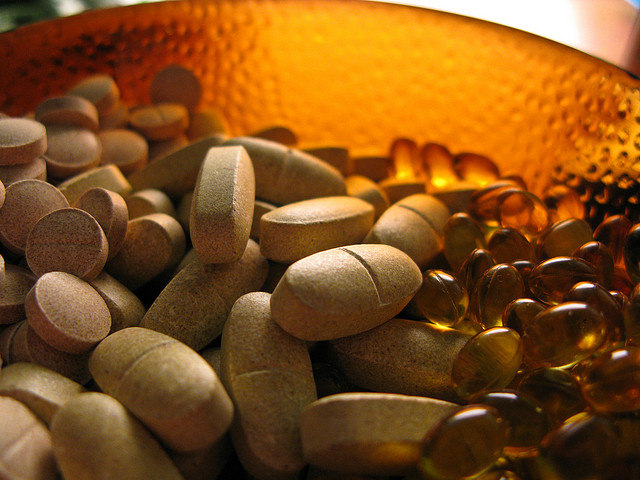During the winter, the sun is too low in the sky for most of the U.S. to get adequate amounts of UVB radiation or Vitamin D from it.
Many experts believe that, for optimal health, levels should be maintained between 50-80ng/mL year round.
This is easily accomplished by taking 4-5000IU of Vitamin D3 per day during the winter months for the average adult.
To be sure you are taking the correct amount, regular Vitamin D3 testing is highly recommended. In my experience, the best and easiest form of Vitamin D3 to absorb and digest is a Vitamin D derived from sheep lanolin, rather than from fish.
Here is some of the latest research on the benefits of Vitamin D:
- The New England Journal of Medicine found that risk of death for intensive care patients are 45% for Vitamin D-deficient patients, and only 16% for folks with sufficient Vitamin D3. (1) That is almost three times the risk!
- As we age, the risk of stroke rises, with about 6.8 million Americans living after having a stroke. In one study, having optimal Vitamin D levels were associated with a 90% return in functional outcome after a stroke. (2)
- Vitamin D levels have been linked to the accelerated death of beta (insulin-producing) cells in cases of diabetes. (3) Today, diabetes is considered the next epidemic.
- In one study, low levels of Vitamin D was associated with mood-related issues and psychiatric disorders. (4) Vitamin D receptors develop in the brain embryonically, suggesting that it is developmentally linked to brain and neurological function.
- In a long-term study conducted over 11 years with 1,650 mother-child pairs, for every 10 ng/mL of Vitamin D concentration in the mother’s blood during pregnancy, an 11% decrease in ADHD-like symptoms occurred. (5)
- In another double-blind placebo study with 218 post-menopausal women split into two groups, the group that was supplemented with 2,000IU of Vitamin D3 a day had 37% less inflammation in the body compared to the group that received the placebo. (6)
- In a study published in the Journal of Endocrinology and Metabolism, 961 female nursing home residents over the age of 70 were tested for their levels of Vitamin D3. The group with the lowest levels of Vitamin D3 has a 49% increased risk of mortality compared to the group with highest Vitamin D levels. (7)
- Vitamin D expert Dr. John Cannell developed a theory that some immune issues are seasonal due to seasonal variations in sunlight, which causes fluctuations in Vitamin D levels. (8) Vitamin D activates genes that support an immune response to foreign entities in the body. (9) Vitamin D has also been shown to support respiratory health. (10,11)
- In one therapeutic study, the normalization of Vitamin D levels showed to significantly improve the severity of fatigue symptoms of primary care patients. (12)
- In a two year trial of Vitamin D supplementation with 1,500 patients, healthy sleep patterns were linked to normal vitamin D levels. The most significant changes were seen when vitamin D3 levels were kept between 60-80ng/mL. (13)
So, how do you get Vitamin D levels above 50 ng/mL?
Make sure you are using an easy-to-absorb supplement. As stated above, I recommend using a Vitamin D derived from sheep lanolin. Unfortunately, very few brands of Vitamin D3 list the source of their Vitamin D, most likely because most of them use fish oil. You can find a liquid form of this on my site. The UVB rays from the sun combine with the sheep lanolin and create pre-vitamin D. The sheep lick their skin and, voila! This is similar to the process by which humans absorb pre-vitamin D through the oil on our skin combining with UVB radiation and absorbing into the blood. Vitamin D from sheep has a transport process much like humans and the only damage to them is a haircut. Fish-based Vitamin D is often a challenge for folks to digest, thus making it difficult to reach optimal levels.
Take your supplement with your biggest meal. This should be the meal with the most fat in it. New research from The Cleveland Clinic indicates that when you take your Vitamin D with your main meal, blood levels increase by 50%. (14) This means that many folks can cut their Vitamin D use in half and still get the same benefits.
In fact, take all of your fat soluble vitamins such as Vitamin A, E, D, K and any fish oils or omega supplements with the heaviest meal of the day.
References:
- N Engl J Med. 2009 Apr 30;360(18):1912-4. doi: 10.1056/NEJMc0809996.
- Cerebrovasc Dis. 2015;40(1-2):73-80. doi: 10.1159/000434691. Epub 2015 Jul 11.
- Endocrinology. 1994 Apr;134(4):1602-10.
- J Psychiatr Pract. 2013 Jul;19(4):296-300. doi: 10.1097/01.pra.0000432599.24761.c1.
- Epidemiology. 2015 Jul;26(4):458-65. doi: 10.1097/EDE.0000000000000292.
- Cancer Prev Res (Phila). 2015 Jul;8(7):628-35. doi: 10.1158/1940-6207.CAPR-14-0449. Epub 2015 Apr 23.
- J Clin Endocrinol Metab. 2012 Apr;97(4):E653-7. doi: 10.1210/jc.2011-3043. Epub 2012 Feb 8.
- Virol J. 2008; 529. Epidemiol Infect. 2006 Dec; 134(6): 1129-40.
- Science News. 2006 Nov 11: 312-3.
- J Immunol. 2003 Dec 15; 171(12): 6690-6.
- Partonen T. Vitamin D and Serotonin in the Winter, Med Hypotheses. 1998 Sept;51(3):267-8.
- N Am J Med Sci. 2014 Aug; 6(8): 396–402. doi: 10.4103/1947-2714.139291
- Med Hypotheses. 2012 Aug;79(2):132-5. doi: 10.1016/j.mehy.2012.03.031. Epub 2012 May 13.
- J Bone Miner Res. 2010 Apr;25(4):482-9
~
Relephant read:
Vitamin D has Astonishing Benefits.
~
Author: Dr. John Douillard
Editor: Travis May
Photo: Flickr/Bradley Stemke









Read 1 comment and reply